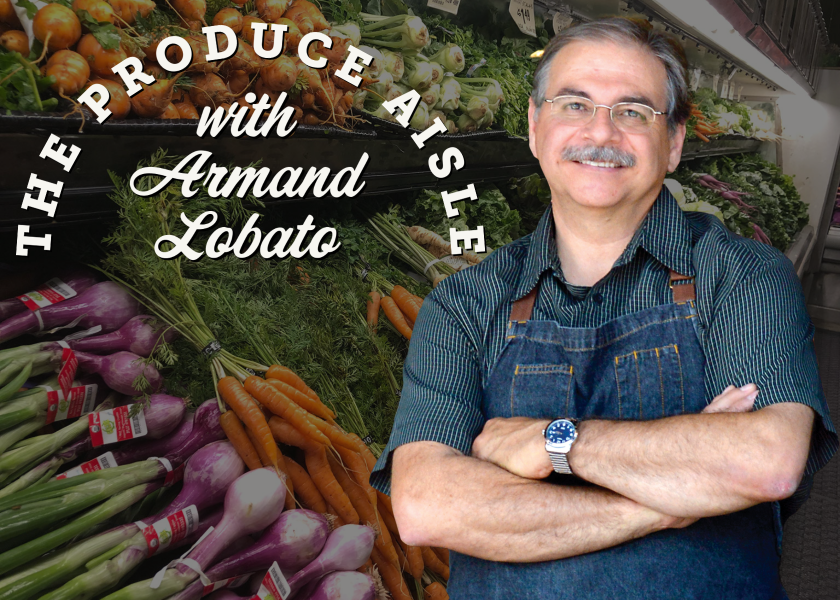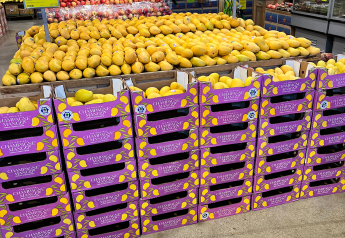Reminiscing about retail produce: what's changed — and what hasn't

Here’s an adage for the produce aisle: “The more things change, the more they stay the same.”
I reminisce about this and so many other weathered business sayings, cliché as they may be, as I leaf through my old book, a copy of “The Packer: A Century of Produce 1893-1993.” I find it interesting to see this grand old publication once printed regional editions such as The New York Packer, The Chicago Packer, The Pacific Coast Packer and The Kansas City Packer — to name a few.
You might say the publication was local, long before local was cool.
An editorial within described The Packer founder Isaac N. Barrick envisioning this, according to the “Century” history page: “A national newspaper covering a wide range of commodities, including fruits and vegetables … a paper that reported crops, prices and markets, and that shined a light on crooked or shady business dealings in the produce trade.” This core vision certainly has not changed.
As a teenage clerk in the mid-1970s, retail produce departments had yet to fully come of age. With a single-level, 60-foot wet rack and a few dry tables amid roughly 1,600 square feet within a “modern” 40,000-square-foot store, produce was indeed a modest fresh aisle. I recall produce crews gearing up for the six-week spring “strawberry season” and only stocking asparagus and artichokes for similar, brief periods. It was a lot of hard work, and far more backroom produce prep was necessary, especially compared to today. I remember one manager talking about discontinuing broccoli during the summer months, as he reasoned it was strictly a cooking vegetable that no customer would consider preparing on a hot day.
There were no packaged salads. A section of the rack qualified as “gourmet” if you carried one mushroom SKU, and a produce department was considered fully stocked with 100-150 fresh items. Today’s full line of familiar apple varieties were still in the distance, as were expanded offerings in citrus, tomatoes and more. Organic and floral was in its infancy, and kale was something we carried so the deli could use it to garnish their meats and cheese cases.
With each passing year — certainly as the store generations expanded — each dozen or so of new or remodeled stores strived to be the biggest, and each stride reflected the latest and greatest regarding new products, which reflected popular and growing industry trends. And fresh produce was right there during some profound changes: Expanded store and produce footprints carried most of what the industry was forging ahead with; extended growing seasons and imports with popular produce filled in much of the previous supply gaps; amazing new varieties arrived; value-added prepacks; and, of course, high-tech packaging and other technology.
Related: Read more columns by Armand Lobato
Throughout it all, store-level goals remain the same: Keep it fresh, full, inviting, well stocked and closely culled, clean, rotated, with bountiful displays and great customer service, offer produce priced competitively to maximize sales and, of course, to build a strong gross-profit margin.
Produce departments in our chain steadily rose from perhaps 6% of the store’s business to many doing well over 12%. Consumers' decisions on where to shop changed from a chain offering a premier meat department to the store that had the best and freshest produce offerings. (Sorry, meatheads.) All the while it made bottom-line sense for a chain to invest in produce department support, since a store’s perishable departments tend to provide an organization with the strongest profit dollars in terms of contribution to overhead — far more than the razor-thin margins that dry groceries tend to generate.
In short, produce is now the showcase of a store, front and center, in every way.
Still, I must revert to what once was and how it all began. A favorite old columnist, the late Gene Amole of The Rocky Mountain News, once reflected on a produce scene around the pre-World War I era.
Supermarkets were years away, and many shopped at corner stores. He spoke about the Italian family truck farms near Brighton and Welby, Colo., just north and east of Denver. Old Geno described how these farmers loaded their mule-drawn wagons with fresh vegetables, freshly packed each morning in season. They maneuvered through narrow, north Denver alleys, bellowing out, “Fresh pro-duce! Fresh veg-ta-bles!”
Housewives peeked between kitchen curtains, then hurried down the back stoops, screen doors slamming behind them. The farmers would stop, pulling back the heavy canvas that protected the goods: the wonderful, aromatic fresh produce, gleaming like jewels beneath. The customers, carefully walked back to their kitchens, balancing their purchases in their aprons, while small children peeked curiously through the back windows.
So much has changed. Then again, so much hasn’t.
Armand Lobato works for the Idaho Potato Commission. His 40 years of experience in the produce business span a range of foodservice and retail positions.







